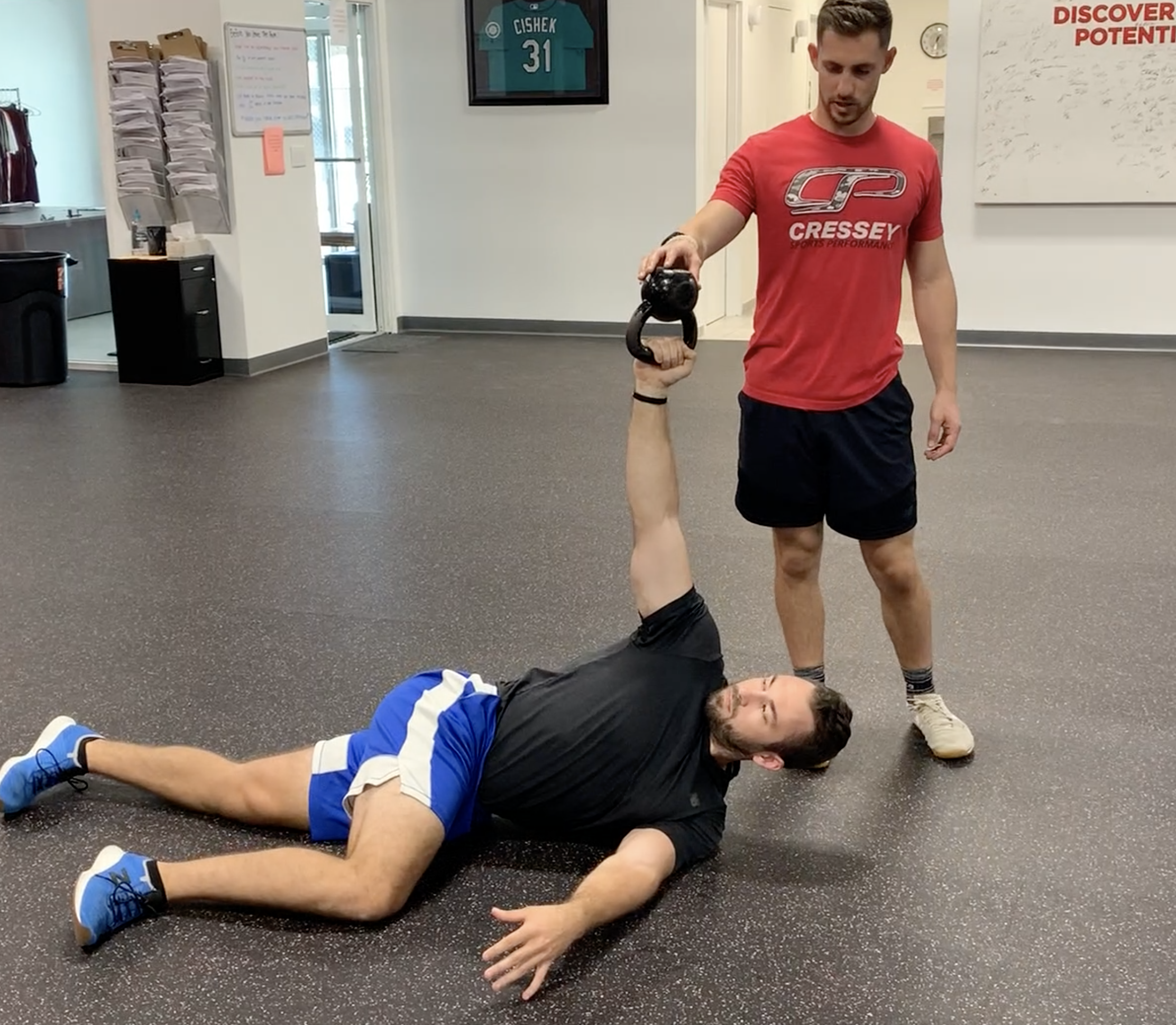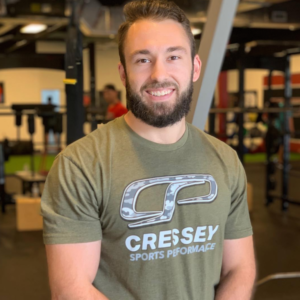
Exercise of the Week: Bottoms-up Kettlebell Arm Bar
Today’s guest post comes from Cressey Sports Performance – Florida coach Derek Kambour.
The Kettlebell Arm Bar is an exercise you will commonly see performed in facilities across the country. Admittedly, it was an activity that we stayed away from for a period, mostly because of the population that we work with and the vulnerable position it could put them in. Many of the high-level pitchers that come to us have experienced anterior shoulder pain. Obviously, these symptoms could be present for a number of reasons, including a loose anterior capsule, labral tear, cranky biceps tendon, nerve-related issues, rotator cuff issues, or a most of other challenges. Regardless of what is causing the symptoms, one of our jobs as performance specialists is to make sure that we are making appropriate exercise selections and not provoking any of these symptoms. What we have found over time with the Kettlebell Arm Bar is that – when executed in a specific manner, at the right time, with appropriate loads – it gives us a lot of return on investment and has not provoked any of these symptoms with any of our athletes.
Many coaches utilize this exercise with their athletes for reflexive shoulder stability (irradiation) and rotary core stability benefits, which can be useful reasons to include them in a program. However, we can also use this activity to accomplish other important training outcomes if it is performed the way that is shown in the video below:
As physical therapist Bill Hartman has done a great job of demonstrating (and be sure to check his stuff out), when we can use internal forces (air pressure, fluid volumes, etc.,) to our advantage in order to help reshape the ribcage and improve scapulothoracic mechanics, that is where we can potentially restore shoulder range of motion without working directly on the joint. Certainly, there are manual interventions that may be necessary, but if we can assist in re-establishing normal joint mechanics with movement alone, I think that is extremely valuable. While many of our throwing athletes possess plenty of external rotation on their throwing shoulder (though we do sometimes see those who have limitations here as well), most will possess very limited internal rotation, especially after a long season. With this movement paired with specific breathing sequences, you can potentially improve shoulder motion in both directions. Traditionally, this movement was thought of as purely a “stability” exercise, but it just goes to show that how you implement or coach the exercise matters.
You may be wondering how heavy this exercise needs to be loaded. My simple answer to this is that if you struggle to breathe during the exercise, there is a good chance it’s too heavy. In that case, keep the goal the goal, and go down in weight. The kettlebell can be held in the normal position (bell is sitting on the outside of your wrists) or, as seen in the video, you can utilize the bottoms-up position to challenge the movement further. We typically like to use the KB Arm Bar in either the warm-up, or paired with medicine ball work for 2-3 sets of 4-6 reps/side.
About the Author
Derek Kambour serves as a Strength and Conditioning Coach. Prior to joining the staff, Derek completed an internship at CSP-FL in the fall of 2018. Prior to joining the CSP-FL team, Derek coached a variety of athletes and clientele at performance facilities in New Jersey. He graduated from Montclair St. University with a degree in Exercise Science and is a Certified Strength and Conditioning Specialist (CSCS) through the NSCA. Derek is also a competitive powerlifter. You can follow him on Twitter and Instagram.



